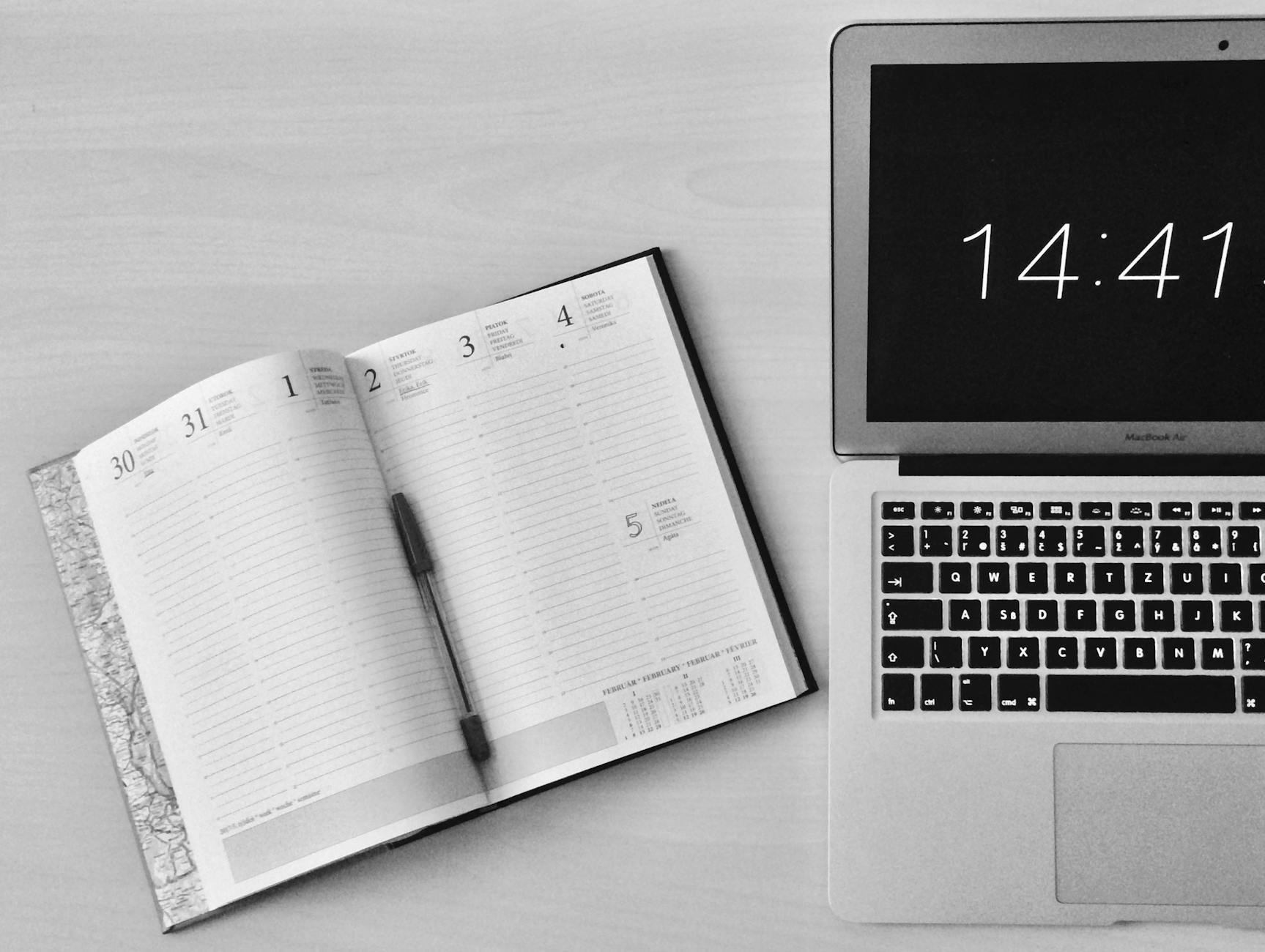
Are you tired of watching your hard-earned money slip through your fingers? 💸 If you’re constantly wondering where your paycheck went, you’re not alone. Overspending is a common problem, but it doesn’t have to be your problem anymore.
Imagine having the power to take control of your finances, achieve your financial goals, and still enjoy life without breaking the bank. 🎯💰 It’s not just a dream – it’s entirely possible with the right strategies. In this blog post, we’ll unveil the top 20 budget hacks that will revolutionize your spending habits and put you on the path to financial freedom.
From tracking your expenses to embracing cash-only spending, we’ll guide you through practical, easy-to-implement tips that will help you reduce overspending and boost your savings. Get ready to discover how simple changes like implementing the 24-hour rule and mastering meal planning can make a significant impact on your wallet. Let’s dive into these game-changing budget hacks and start your journey towards financial success!
Track Your Spending

Use budgeting apps
In today’s digital age, budgeting apps have become indispensable tools for tracking spending and managing finances. These apps offer a user-friendly interface and automated features that make expense tracking effortless. Here are some popular budgeting apps and their key features:
| App Name | Key Features |
|---|---|
| Mint | Automatic categorization, bill reminders, credit score monitoring |
| YNAB | Zero-based budgeting, goal tracking, real-time syncing |
| Personal Capital | Investment tracking, retirement planning, cash flow analysis |
Keep a spending journal
While apps are convenient, maintaining a manual spending journal can provide a more tangible connection to your finances. This practice encourages mindfulness in spending and helps identify patterns. To create an effective spending journal:
- Record every purchase, no matter how small
- Note the date, amount, and category of each expense
- Include emotional triggers or circumstances for each purchase
- Review your journal weekly to gain insights
Review bank statements regularly
Regular review of bank statements is crucial for catching discrepancies and understanding your spending habits. Set aside time each month to:
- Check for unauthorized transactions
- Reconcile your records with the statement
- Identify recurring expenses that could be reduced or eliminated
Categorize expenses
Categorizing expenses provides a clear picture of where your money is going. Common categories include:
- Housing
- Transportation
- Food
- Utilities
- Entertainment
- Debt payments
By organizing your expenses, you can easily identify areas where you’re overspending and make informed decisions about budget allocations. This practice, combined with the other tracking methods, forms a solid foundation for reducing overspending and achieving your financial goals.
Set Clear Financial Goals
Define short-term objectives
Setting clear financial goals starts with defining short-term objectives. These are typically achievable within 1-12 months and serve as stepping stones towards your larger financial aspirations. Here are some examples of short-term financial objectives:
- Pay off a specific credit card debt
- Save for an emergency fund
- Reduce monthly expenses by 10%
- Start a side hustle to earn extra income
To effectively set and track your short-term objectives, use the SMART criteria:
| Criteria | Description |
|---|---|
| Specific | Clearly define what you want to achieve |
| Measurable | Quantify your goal for easy tracking |
| Achievable | Ensure the goal is realistic given your resources |
| Relevant | Align the goal with your overall financial plan |
| Time-bound | Set a deadline for achieving the goal |
Establish long-term targets
Long-term financial targets typically span 1-5 years or more. These goals require more planning and commitment but can lead to significant financial improvements. Examples include:
- Saving for a down payment on a house
- Building a retirement fund
- Paying off student loans
- Starting a business
When establishing long-term targets:
- Be realistic about your timeline
- Break them down into smaller milestones
- Regularly review and adjust as needed
- Consider seeking professional financial advice
Create a vision board
A vision board is a powerful tool to visualize your financial goals and stay motivated. To create an effective vision board:
- Gather images representing your financial goals
- Include inspiring quotes or affirmations
- Display it prominently where you’ll see it daily
- Update it regularly as your goals evolve
Remember, setting clear financial goals is crucial for reducing overspending and achieving financial stability. With your goals in place, you’ll be better equipped to make informed spending decisions and prioritize your financial well-being.
Implement the 24-Hour Rule

A. Delay impulse purchases
Implementing the 24-hour rule is a powerful strategy to curb impulsive spending. When you feel the urge to make an unplanned purchase, pause and give yourself a full day to consider it. This cooling-off period allows you to:
- Evaluate the necessity of the item
- Research alternatives or better deals
- Determine if it aligns with your financial goals
By delaying impulse purchases, you can significantly reduce overspending and make more mindful decisions.
B. Reassess needs vs. wants
During the 24-hour waiting period, take time to critically examine whether the item is a genuine need or merely a want. Use this checklist to guide your assessment:
| Question | Consideration |
|---|---|
| Will it solve a problem? | Assess if the item addresses a real issue |
| Do I already own something similar? | Check for duplicates or alternatives |
| How often will I use it? | Determine the item’s long-term value |
| Does it fit my budget? | Ensure it aligns with your financial plan |
C. Find alternatives or better deals
If you decide the purchase is necessary, use the 24-hour period to:
- Compare prices across different retailers
- Look for discount codes or upcoming sales
- Consider second-hand options
- Explore rental or borrowing possibilities
By thoroughly researching alternatives, you can often find better deals or more cost-effective solutions, further reducing your overall spending.
Embrace Cash-Only Spending

Use envelope budgeting system
The envelope budgeting system is a powerful tool to control spending and stick to your budget. Here’s how it works:
- Divide your expenses into categories
- Label envelopes for each category
- Fill envelopes with allocated cash
- Spend only from the designated envelope
| Category | Weekly Budget | Monthly Budget |
|---|---|---|
| Groceries | $100 | $400 |
| Entertainment | $50 | $200 |
| Transportation | $75 | $300 |
This system provides a tangible way to manage your money and prevents overspending. When an envelope is empty, you’ve reached your limit for that category.
Leave credit cards at home
By leaving your credit cards at home, you eliminate the temptation to overspend. Carry only the cash you’ve budgeted for the day or week. This practice:
- Reduces impulse purchases
- Increases awareness of spending habits
- Helps avoid accumulating debt
Set weekly cash allowances
Establishing weekly cash allowances is an effective way to control spending:
- Determine your monthly disposable income
- Divide it into weekly amounts
- Withdraw this amount at the beginning of each week
This method provides a clear spending limit and helps you pace your expenses throughout the month. It’s a simple yet effective budget hack to reduce overspending and increase financial awareness.
Master Meal Planning

Create weekly menus
One of the most effective ways to master meal planning is by creating weekly menus. This practice not only saves time but also reduces impulse purchases and food waste. Here’s a simple table to help you organize your weekly menu:
| Day | Breakfast | Lunch | Dinner |
|---|---|---|---|
| Monday | |||
| Tuesday | |||
| Wednesday | |||
| Thursday | |||
| Friday | |||
| Saturday | |||
| Sunday |
Shop with a grocery list
Once you’ve planned your meals, create a detailed grocery list. This practice is crucial for avoiding unnecessary purchases and staying within your budget. Consider organizing your list by store sections:
- Produce
- Dairy
- Meat
- Pantry items
- Frozen foods
Batch cook and freeze meals
Batch cooking is a game-changer for both your time and wallet. By preparing larger quantities of meals and freezing portions, you can:
- Take advantage of bulk ingredient discounts
- Reduce the temptation to order takeout on busy days
- Minimize food waste by using ingredients efficiently
Use loyalty programs and coupons
Maximize your savings by leveraging loyalty programs and coupons. Many grocery stores offer digital coupons through their apps, making it easier than ever to save money. Keep an eye out for:
- Store-specific loyalty programs
- Manufacturer coupons
- Cashback apps
By implementing these meal planning strategies, you’ll be well on your way to reducing overspending and taking control of your food budget. Next, we’ll explore how to optimize your living situation for even more savings.
Optimize Your Living Situation

Negotiate rent or refinance mortgage
One of the most effective ways to optimize your living situation is to reduce your housing costs. Start by negotiating your rent with your landlord. Research comparable properties in your area to strengthen your position. If you’re a homeowner, consider refinancing your mortgage to potentially lower your monthly payments.
Find a roommate
Sharing your living space can significantly reduce your housing expenses. Here’s a comparison of potential savings:
| Living Arrangement | Monthly Rent | Your Share |
|---|---|---|
| Living Alone | $1,500 | $1,500 |
| With 1 Roommate | $1,500 | $750 |
| With 2 Roommates | $1,800 | $600 |
Downsize to a smaller space
Moving to a smaller home or apartment can lead to substantial savings. Consider the following benefits:
- Lower rent or mortgage payments
- Reduced utility costs
- Less space to furnish and maintain
- Encourages minimalism and reduces unnecessary purchases
Reduce utility costs
Implement these strategies to lower your utility bills:
- Install energy-efficient appliances
- Use programmable thermostats
- Seal drafts and improve insulation
- Switch to LED light bulbs
- Take shorter showers and fix leaky faucets
By optimizing your living situation, you can significantly reduce your monthly expenses and allocate more money towards your financial goals. Next, we’ll explore how to cut unnecessary subscriptions and further trim your budget.
Cut Unnecessary Subscriptions

Audit streaming services
In today’s digital age, streaming services have become a major source of entertainment, but they can also be a significant drain on your budget. Take a critical look at your streaming subscriptions and evaluate which ones you truly use and enjoy. Consider the following:
- Usage frequency
- Content variety
- Cost per month
| Service | Monthly Cost | Hours Watched | Cost per Hour |
|---|---|---|---|
| Netflix | $15.99 | 20 | $0.80 |
| Hulu | $7.99 | 5 | $1.60 |
| Disney+ | $7.99 | 2 | $4.00 |
Cancel unused gym memberships
Gym memberships often go unused, becoming a silent budget killer. Ask yourself:
- When was the last time you visited?
- Are you getting value for your money?
- Could you exercise at home or outdoors instead?
Opt for free alternatives
Many free alternatives can replace paid subscriptions:
- Use library apps for e-books and audiobooks
- Explore free streaming platforms like YouTube or Pluto TV
- Try free workout apps or YouTube fitness channels
Share accounts with family or friends
For services you can’t live without, consider sharing accounts:
- Family plans often offer better value
- Split costs with trusted friends
- Ensure compliance with service terms and conditions
By implementing these strategies, you can significantly reduce your monthly expenses without sacrificing entertainment or fitness goals. Next, we’ll explore how to shop smarter and make your money go further.
Shop Smarter

Compare prices online
In today’s digital age, comparing prices online is a crucial step in shopping smarter. Utilize price comparison websites and browser extensions to ensure you’re getting the best deal. These tools can save you both time and money by quickly scanning multiple retailers for the lowest prices.
Use cashback websites and apps
Cashback platforms offer an excellent way to earn money back on your purchases. Here’s a quick comparison of popular cashback options:
| Platform | Average Cashback Rate | Payout Options |
|---|---|---|
| Rakuten | 1-40% | Check, PayPal |
| TopCashback | 2-45% | Bank Transfer, PayPal |
| Ibotta | 1-30% | PayPal, Gift Cards |
Buy generic brands
Opting for generic or store-brand products can lead to significant savings without compromising on quality. Consider these budget-friendly alternatives:
- Groceries: Store-brand cereals, canned goods, and snacks
- Medications: Generic over-the-counter drugs
- Cleaning supplies: Store-brand detergents and household cleaners
- Personal care: Generic toiletries and beauty products
Take advantage of sales and discounts
To maximize your savings, stay informed about upcoming sales and discounts. Here are some strategies to help you shop smarter:
- Sign up for store newsletters to receive exclusive offers
- Use coupon apps to find discounts on your favorite products
- Shop during seasonal sales events like Black Friday or Cyber Monday
- Join loyalty programs for additional perks and discounts
By implementing these smart shopping techniques, you’ll be well on your way to reducing overspending and sticking to your budget. Next, we’ll explore how to cut transportation costs, another crucial aspect of smart budgeting.
Reduce Transportation Costs

Now that we’ve explored various ways to save money in different aspects of life, let’s focus on an area that can significantly impact your budget: transportation costs. By implementing these strategies, you can reduce your expenses while still getting where you need to go.
Carpool or use public transit
Sharing rides or utilizing public transportation can lead to substantial savings. Here’s a comparison of potential monthly costs:
| Transportation Method | Estimated Monthly Cost |
|---|---|
| Driving alone | $300 – $500 |
| Carpooling (4 people) | $75 – $125 per person |
| Public transit pass | $50 – $150 |
Bike or walk for short trips
For nearby destinations, consider these eco-friendly and budget-conscious options:
- Improved health and fitness
- Zero fuel costs
- No parking fees
- Reduced vehicle wear and tear
Maintain your vehicle regularly
Proper maintenance can prevent costly repairs and improve fuel efficiency:
- Follow the manufacturer’s recommended service schedule
- Keep tires properly inflated
- Replace air filters as needed
- Use the recommended grade of motor oil
Compare insurance rates
Don’t settle for your current insurance plan. Shop around and compare rates annually to ensure you’re getting the best deal. Consider:
- Bundling policies (auto, home, life)
- Increasing deductibles for lower premiums
- Asking about available discounts (good driver, low mileage, etc.)
By implementing these transportation cost-saving strategies, you’ll be well on your way to reducing overspending and achieving your financial goals. Next, we’ll explore how DIY projects and upcycling can further stretch your budget.
DIY and Upcycle

Learn basic home repairs
Learning basic home repairs can save you a significant amount of money in the long run. Instead of calling a professional for every minor issue, you can tackle many repairs yourself. Here’s a list of essential skills to learn:
- Unclogging drains
- Fixing leaky faucets
- Patching drywall
- Painting walls
- Replacing light fixtures
By mastering these skills, you can avoid costly service calls and reduce your overall expenses.
Make your own cleaning products
Creating your own cleaning products is not only cost-effective but also environmentally friendly. Here’s a simple recipe for an all-purpose cleaner:
| Ingredient | Amount |
|---|---|
| White vinegar | 1 cup |
| Water | 1 cup |
| Lemon juice | 2 tablespoons |
| Essential oil (optional) | 5-10 drops |
Mix all ingredients in a spray bottle, and you’re ready to clean most surfaces in your home.
Repurpose old items
Giving new life to old items can save money and reduce waste. Consider turning old jars into storage containers or transforming worn-out furniture with a fresh coat of paint. This approach not only saves money but also adds a unique touch to your home decor.
Exchange skills with friends
Bartering skills with friends is an excellent way to save money while learning new things. For example, if you’re good at cooking, you could offer to teach a friend in exchange for help with basic car maintenance. This mutual exchange of skills can lead to significant savings and foster a sense of community.
Mastering your finances doesn’t have to be complicated or overwhelming. By implementing these 20 budget hacks, you can significantly reduce overspending and take control of your financial future. From tracking your expenses and setting clear goals to embracing cash-only spending and optimizing your living situation, each strategy offers a practical way to cut costs and boost your savings.
Remember, the key to successful budgeting is consistency and mindfulness. Start by incorporating a few of these hacks into your daily routine and gradually build up to more. As you see your savings grow and your financial stress decrease, you’ll be motivated to continue making smart choices with your money. Take the first step today towards a more financially secure tomorrow – your future self will thank you.



